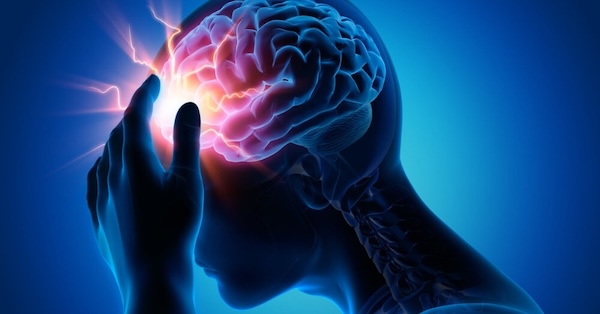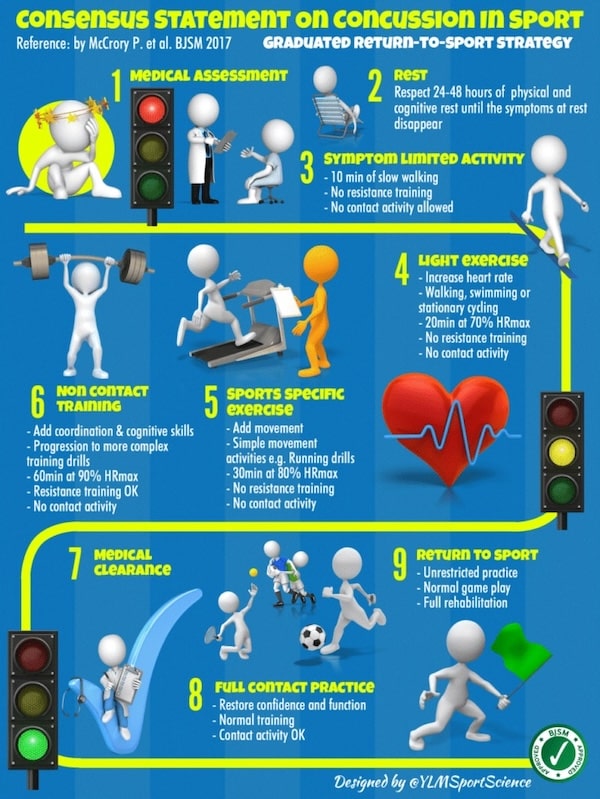
How do I know if I’m Concussed?
July 26, 2022
Symptoms, Causes & Treatment of Vestibular Migraine
October 27, 2022Sustaining a concussion can be quite a traumatic experience well beyond the physical. There is often anxiety associated with a head trauma due to the lack of understanding of what is actually happening at the pathophysiological level.
The consensus statement on concussion in sport defines a concussion as:
“A complex pathophysiological process affecting the brain, induced by biomechanical forces”
Sounds scary right?
The truth is that with the correct education and guidance, 80% of concussion suffers will demonstrate clinical recovery in a relatively short timeframe:
- Adults: within 2 weeks (up to 4 weeks)
- Children, Adolescents: within 30 days.
So what is actually happening to the brain to cause the symptoms of concussion and how do we manage this?
Injury + The Body’s Response
You don’t need to suffer a direct blow to the head to sustain a concussion. Rapid acceleration and deceleration of the skull creates a shearing force between the different tissues (grey and white matter) within the brain. The stretching of neurons that cross between these tissues can cause irritation or damage, resulting in an ionic shift between the neurotransmitter chemicals (calcium and potassium).
The body’s response to this is two fold:
- Reduce blood flow to the brain (known as vasospasm)
- Use cellular ‘pumps’ to try to restore the ionic balance.
These ‘pumps’ require energy to run, however the body has effectively reduced its glucose supply to the brain due to the reduced blood flow.
This is what professionals call an ‘energy crisis’ and this is responsible for the many of the initial symptoms of concussion such as:
- Visual issues
- Brain Fogg/Confusion
- Tiredness
- Cognitive Impairment
- Balance problems
- Headache
- Sleep Issues
- Emotional/anxious/depressed
We often see the majority of initial symptoms centred around visual issues and this is because 70% of sensory processing in the brain is dedicated to visual information.
Initial Management:
Early education and management is pivotal to improve the long term outcome of concussion.
Given the involvement of the visual system in brain function, its important that in the initial 48 hours post injury we limit (based on symptom aggravation) or completely avoid common activities that involve the eyes :
- reading (print or electronic)
- phone/table/computer use
- video games
- busy spaces
- work/school/sport
During this time listening to music or a podcast is encouraged as are supportive phone calls from friends. Sitting outside and a warm bath are also great ways to recover. Sleep hygiene is also paramount.
What about exercise?:
Intense physical/cognitive activity in this acute stage of concussion isn’t recommended. However strict rest has also shown to be ineffective.
After the initial 48 hour period of rest, light aerobic exercise should be encouraged below the threshold of symptom aggravation and inline with the consensus statement below. It’s important to note that participants must not report any new or a re-aggravation of symptoms before proceeding to the next step. They must also wait 24 hours between steps.

Why do I need to sit sport out for 14 days?
Whilst the majority of uncomplicated concussion cases will demonstrate clinical recovery in a relatively short timeframe, some data suggests that full physiological recovery may take longer than clinical recovery.
Following a concussion, the brain is rendered more susceptible to cellular injury, and therefore additional trauma sustained during this ‘window’ may result in more severe cellular damage, causing:
- Higher Symptom Load
- Longer recovery timelines
- Second impact syndrome – which can have rare yet devastating outcomes for paediatric and adolescent populations.
With the appropriate education and early management strategies, most concussion symptoms will resolve in a relatively short timeframe. Return to work/school and sport strategies then become increasingly important and will be covered in our next post.
If you require support or assistance after sustaining a concussion, our trained therapists are here to help.
- information referenced from Shift concussion management program



